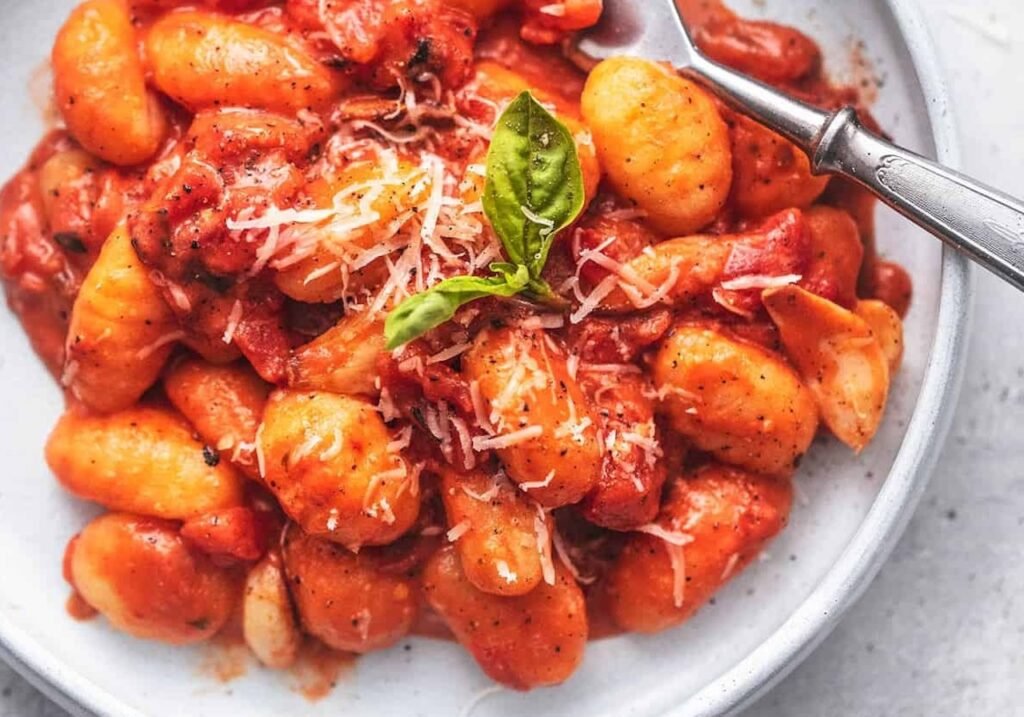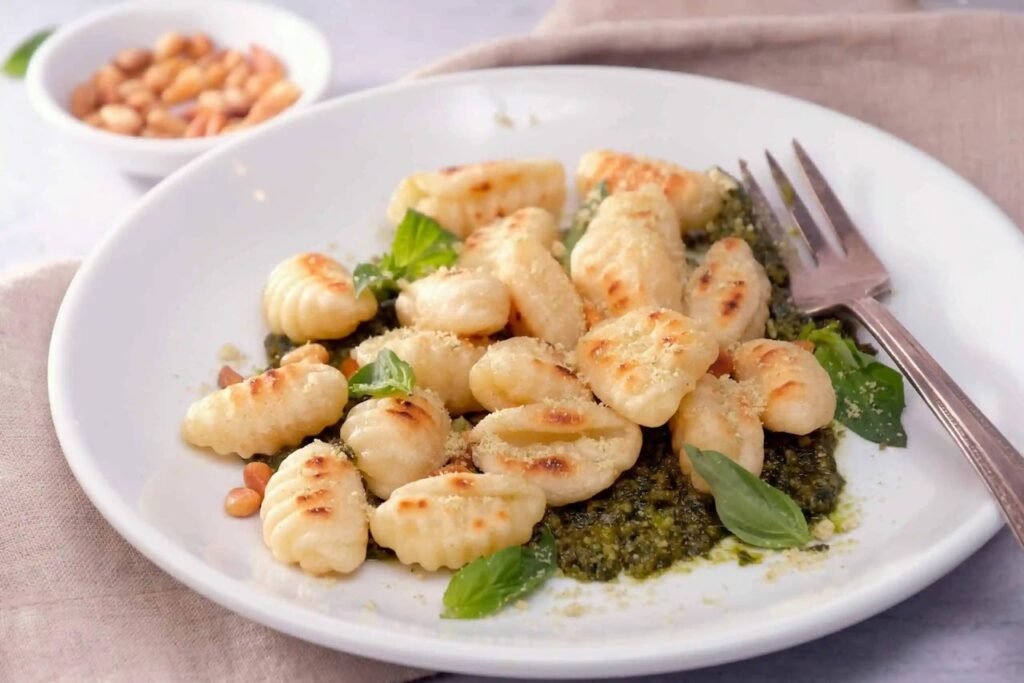Gnocchi is much more than just pasta; it’s a culinary symbol of comfort, history, and Italian tradition, enjoyed worldwide for centuries. Whether served in a rich tomato sauce, browned butter with sage, or simply with parmesan, gnocchi remains one of the most beloved dishes in Italian cuisine. This article explores the story of gnocchi, from its humble origins as a food for peasants to its modern reinvention in the hands of world-class chefs. We’ll cover its history, cultural importance, recipes, reviews, and frequently asked questions.
The Origins of Gnocchi
The word “gnocchi” comes from the Italian nocchio, meaning a knot in wood, or nocca, meaning a knuckle. This reflects the small, rounded dumpling shape. Gnocchi predates many pasta varieties and can be traced back to Roman times, when semolina dough mixed with eggs was boiled and eaten.
Potato gnocchi, the variety most familiar today, did not appear until the 16th century. After potatoes were introduced to Europe from the Americas, creative Italian cooks began using them in place of flour-heavy dough, giving birth to the lighter, fluffier dumpling version we know and love.
Over time, each Italian region developed its own version:
- Northern Italy (Piemonte, Lombardy, Veneto): Potato-based gnocchi with butter, cheese, and herbs.
- Central Italy (Tuscany, Lazio): Semolina or ricotta-based dumplings.
- Southern Italy (Campania, Basilicata): Variants flavoured with tomato, flour, and local cheeses.
Gnocchi in Italian Culture
In Italy, gnocchi is not just food, it is tradition. In Rome, Thursdays are commonly known as “Gnocchi Thursday” (giovedì gnocchi), a cultural custom rooted in post-war dining habits. This ritual provided people with a hearty, filling meal before Friday, a day historically associated with fasting or lighter dishes. Even today, many Roman trattorias keep the tradition alive.
In Argentina, influenced heavily by Italian immigrants, gnocchi (ñoquis) is celebrated on the 29th of every month. Families eat gnocchi together, often placing money under the plate as a symbol of prosperity.
This cultural legacy shows that gnocchi’s importance reaches far beyond its flavour, it is about family, memory, and community.
Traditional Gnocchi Recipes
Classic Potato Gnocchi
Ingredients:
- 1 kg starchy potatoes
- 250 g flour (plus extra for dusting)
- 1 egg
- Salt (to taste)
Method:
- Boil potatoes with skins on until soft. Peel and mash them while warm.
- Mix mashed potatoes with flour, egg, and salt, kneading lightly.
- Roll the dough into long ropes and cut into small pieces.
- Shape by rolling on the back of a fork or gnocchi board.
- Boil in salted water until they rise to the surface (around 2–3 minutes).
Variations
- Ricotta Gnocchi (Gnocchi di Ricotta): Uses ricotta cheese instead of potatoes for a softer, lighter texture.
- Semolina Gnocchi (Gnocchi alla Romana): Made from semolina flour, shaped into discs, and baked with cheese and butter.
- Pumpkin Gnocchi: Seasonal variation that pairs well with browned butter and sage.
How to Cook Gnocchi Perfectly
Cooking gnocchi requires balance: under-kneading leaves them crumbly, while over-kneading makes them gummy. Always use starchy potatoes like Russet or Yukon Gold, as waxy potatoes hold too much water. When boiling gnocchi, avoid overcrowding the pot to prevent them from sticking together. Finally, pairing gnocchi with the right sauce elevates the dish:
- Tomato sauce and basil for a Mediterranean touch.
- Browned butter and sage for earthy flavours.
- Pesto for freshness.
- Gorgonzola cream for indulgence.

Gnocchi Reviews Around the World
Food lovers worldwide praise gnocchi for its comfort factor. Unlike pasta, gnocchi delivers a pillowy softness that absorbs sauce beautifully. Reviews often highlight its versatility—an everyday comfort meal that can also be elevated into fine dining.
In Italy, traditionalists prefer simple sauces that showcase gnocchi’s texture. In the US and UK, restaurants experiment with fusion flavours like truffle gnocchi, sweet potato gnocchi, and even gluten-free alternatives. This adaptability ensures gnocchi’s continued popularity in global gastronomy.
Nutritional Value of Gnocchi
While gnocchi is high in carbohydrates, it offers more nutritional variety than plain pasta, especially when made with ingredients such as spinach, pumpkin, or ricotta. A typical serving contains around 250–300 calories, depending on the sauce. Whole wheat and gluten-free versions have also become popular, making gnocchi more accessible to diverse diets.
FAQs About Gnocchi
Is gnocchi a type of pasta or a dumpling?
Technically, gnocchi is considered a dumpling rather than pasta, although it is served in a similar way.
Can you freeze gnocchi?
Yes, uncooked gnocchi freezes well. Spread them on a tray, freeze until solid, then store in a container. Boil directly from frozen.
Why do my gnocchi turn out mushy?
This usually means too much water in the dough. Use starchy potatoes, avoid over-boiling, and add flour gradually.
What sauces go best with gnocchi?
Classic pairings include tomato sauce, butter and sage, creamy gorgonzola, or light pesto.
Is gnocchi gluten-free?
Traditional gnocchi uses flour, but gluten-free recipes with rice flour or potato starch are available.
How can I make gnocchi healthier?
Use alternative flours, ricotta, or vegetables like sweet potato or spinach for a lighter dish.
Where can I eat the best gnocchi in Italy?
Rome, Florence, and Naples all boast authentic gnocchi dishes, but small family-run trattorias often serve the most memorable versions.
Modern Gnocchi Trends
Today, gnocchi enjoys a revival in contemporary cuisine. Chefs experiment with gourmet ingredients like black truffle, lobster, or wild mushroom sauces. Vegan and gluten-free gnocchi recipes are highly sought-after, proving their flexibility for modern tastes. Even ready-made gnocchi has improved, allowing home cooks to enjoy authentic flavours with convenience.
Social media platforms like Instagram and TikTok also contribute to gnocchi’s renewed popularity, with home chefs sharing quick recipes and shaping tutorials. Gnocchi’s aesthetic appeal, soft, pillowy dumplings bathed in sauces, makes it highly shareable online.
Final Thoughts
From its Roman beginnings to its position as a global comfort food, gnocchi has transcended centuries and borders. Its adaptability, tradition, and heartwarming flavours keep it ever-present in culinary culture. Whether you’re cooking it at home, eating it in a trattoria in Rome, or ordering a gourmet version at a fine dining restaurant, gnocchi represents the perfect blend of simplicity and satisfaction.










